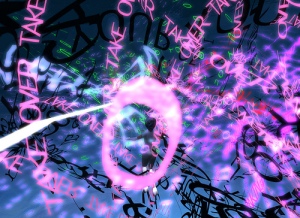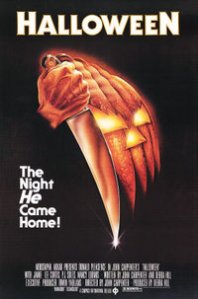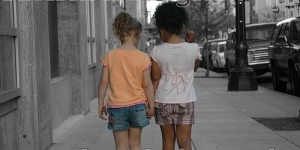
This gorgeous image is by mariobraune and I found it on Flickr. Click the photo for more of the artist's great photographs.
GONE by Michael Grant has a premise that’s a brilliant hook: every person over the age of fifteen disappears and only children are left behind. The author tells you about this situation in the very first sentence. Consider this opening:
One minute the teacher was talking about the Civil War. And the next minute he was gone.
As a reader, that sentence alone was going to be enough to keep me reading for at least a couple of chapters. However, as I’ve been reminded lately, a premise is not a plot. It will keep me reading for a couple of chapters but GONE is a whopping 560 pages long. After the initial shock of children being left to their own devices, a story with tensions and struggles had to happen.
As a writer, I know the challenge of composing the beginning of a book. You need to introduce characters. In GONE, there’s a pretty sizable cast. You also have to introduce setting. If there’s world-building to be done, that needs to be solidly established in the first several chapters. Besides all of that, the plot needs to move.
Mr. Grant uses a very effective device to get all of this done. The main character is Sam. His love interest is Astrid. Astrid has a little autistic brother and he’s missing. Voila! We have action. We have an excuse to explore the setting. And if we break up the search for little brother Pete with a point of view switch here and there to look at some of the other characters, that’s OK too. It’s brilliant and there’s tension, even if the real antagonist of the story, Caine, isn’t introduced until page 140.
Once Caine shows up, the story is propelled forward. We have our antagonist and his cohort of villain friends. Our protagonist, Sam, and his cohort of hero friends have already been established. Instant tension.
In the meantime, many of our minor characters have their own separate challenges and tension going on. Lana, a character with a story-line of her own, fights for her life for weeks. First, she’s terribly injured in a car accident, then coyotes trap her in a hermit’s shack. Her private story is compelling and it’s sprinkled in amongst the main plot line. Mother Mary is a character who takes charge of the youngest children. At the same time she fights with an eating disorder. Jack is a young computer genius who is having second thoughts about his association with the Cotes Academy crowd.
And these are just a few of the minor stories.
These are situations that the average reader can identify with. Sam and Caine might be awesome super heros/villains, but Mother Mary, Lana, and Jack are (mostly) just stressed out people dealing with crazy circumstances. As a writer, this is a good lesson for me. Sometimes, I avoid writing about the “normal people” for fear that the reader will find it dull. However, watching normal people cope is rarely dull. If I ever find myself in need of a subplot, I’m going to look to my secondary characters and see if there’s a story there.
Plotting in GONE by Michael Grant is a clever mix of hero quests, the struggle of good versus evil, and personal stories of coping. There are aspects of the plot that I didn’t like. It felt like a lot of time was spent following the travels of the main characters. Books where characters travel through the desert, then travel through a forest, then travel on the water, then travel (pick your mode of transportation) one of my pet peeves. Just moving a character around doesn’t mean they’re really doing anything. Nonetheless, I never felt the urge to put the book down. By the last half of the book, I was completely engaged.
So, that’s my plot analysis for GONE by Michael Grant. On Wednesday, I’ll take a look at the writing style. This was definitely a book where the writing didn’t get in the way of the story! Until then.









